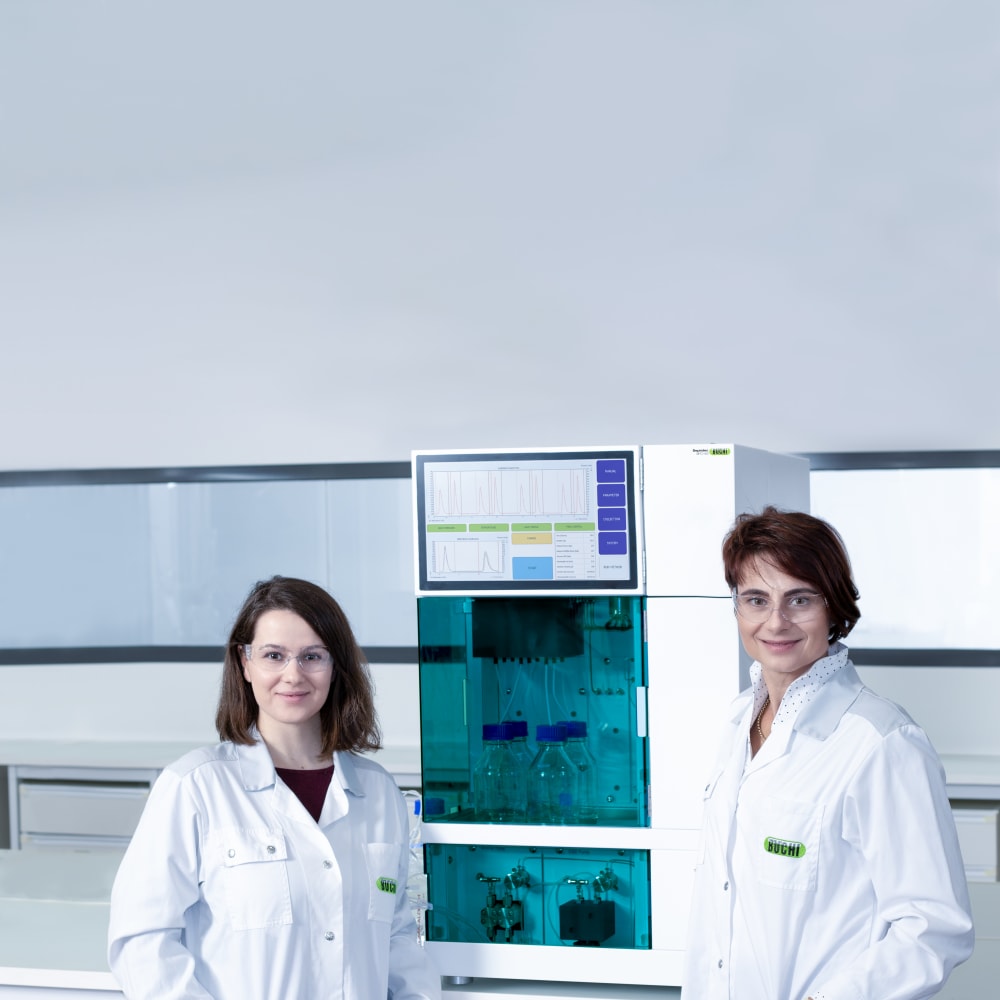The quick, easy and flexible way to purify and isolate with SFC

During the short time that she has been familiarising herself with the new preparative system and technology, Heidi van der Mel, Analytical Scientist in Jesse de Gooijer’s group, has reached the same conclusions. Preparative SFC enables her to purify anything from just a few milligrams to several grams for the chemists, who in turn are synthesising the most challenging compounds for clients wishing to have an intermediate or end-product purified as effectively as possible.
SFC at BUCHI
After acquiring Sepiatec in 2023, BÜCHI Labortechnik has added SFC systems to its portfolio of preparative chromatography. Increasingly, SFC is seen as an alternative for preparative LC, primarily due to the use of carbon dioxide. SFC drastically reduces the need to use environmentally harmful mobile phases. Other advantages of this technology include shorter run times and higher separation efficiencies.
Time savings with SFC
Since 2015, the focus of Symeres chromatography expertise has shifted towards supercritical fluid chromatography (SFC), with the acquisition of an initial analytical SFC system.

“As a rule, in order to separate a mixture of enantiomers, a chiral screening is performed to obtain the ideal set-up for your column and eluent solution. Initially, we were primarily using normal-phase liquid chromatography. This took up quite some time, around an hour per run. If you want to test all the different mobile phases and columns, you need around a day before the first results come through. The analytical SFC process is now able to register a measurement in 2 to 6 minutes which enables us to quickly analyse multiple separation methods. We have fifteen columns for the SFC and we can add twelve different co-solvents to the supercritical CO2. As a standard, we use methanol for this, but acetonitrile, isopropanol or ethanol are also used on a regular basis. Often this is supplemented by an acid or alkaline additive to get a better baseline separation and clearer peaks. All in all, with analytical SFC we can achieve a much more detailed results within just a few hours using a lot more different analytical columns than we can get using traditional screening,” explains Jesse.
Preparative SFC
In the wake of analytical SFC, preparative SFC has now been added to Groningen’s armoury of instrumentation. “In March 2022, the Berlin-based company Sepiatec installed the SFC-250, a compact state-of-the-art system which allows us to do things with preparative LC which we could never have dreamed of. For example, we can now purify dozens of grams of a substance within just a few days, something which would have cost considerably more time using the conventional system,” says Jesse.
Preparative SFC is applied in respect of both intermediate and end-products which have been produced by the chemists. Often it involves troublesome purifications which cannot be achieved through crystallisation or flash chromatography, for example. “The chemists provide a flask containing the raw material,” explains Heidi, for whom the SFC-250 now holds few secrets. “As a rule, we can purify from 100 to 500 milligrams within an hour. By then, I’ve completed everything, from the injection to the rinsing of the system. It goes without saying that larger amounts cost more time because you need more runs. The system is highly flexible and the chromatography extremely reproducible. If I start a run today and then again tomorrow, the results will be the same. Even after 100 runs, the peaks have still not shifted. They come increasingly more purified.”
User-friendly
Another benefit of Sepiatec SFC’s speed is that around 90 percent of preparative separations carried out at Symeres are isocratic, that means with a fixed ratio of eluent solutions. The advantage of this is that you don’t need to wait until the run is finished to start the next one. If the run takes 10 minutes for full separation, you can inject every two minutes, for example. The system has been set up in such a way that it calculates by itself the timing of the next injection so that peaks don’t overlap. According to Heidi, the ingenuity of the device is in its operation.

“The software is extremely easy to use, with a touchscreen and a simple menu structure. Starting the device is likewise straightforward: it automatically cleans the tubing and purification can start within 15 minutes. What’s more, the system is so compact it fits easily onto a workbench.